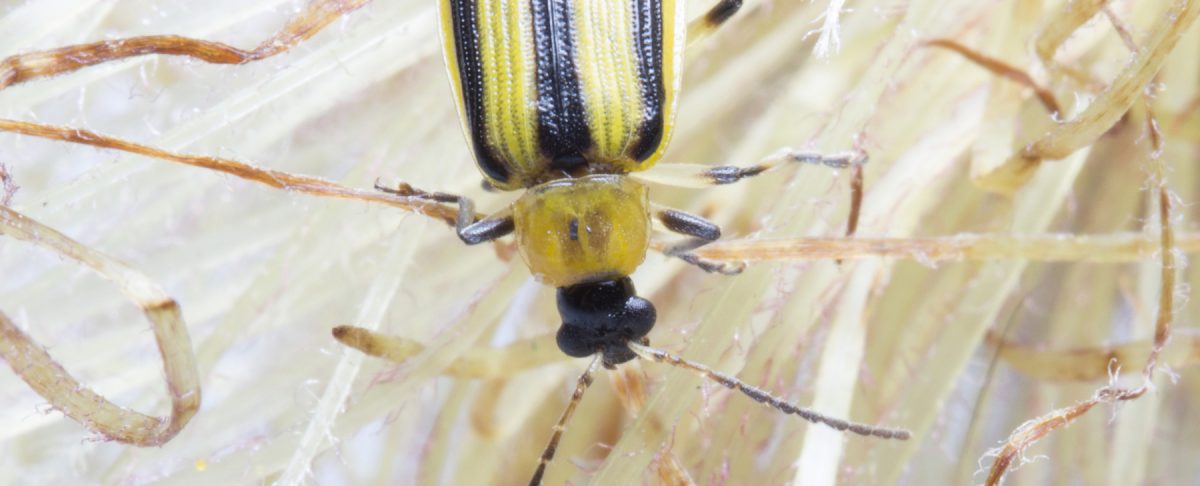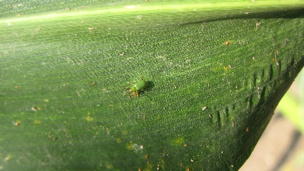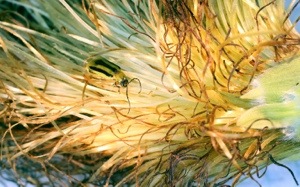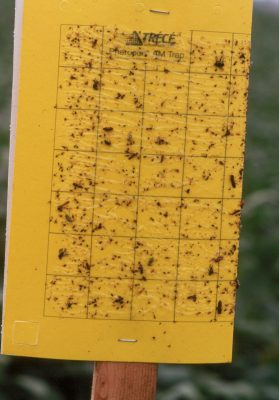
Bryan Jensen, Dept of Entomology and Division of Extension, University of Wisconsin-Madison
We are rapidly coming to that time (early – mid August) when adult corn rootworms will start laying eggs in corn fields and they will do so for a three week period of time. From a pest management standpoint, this is an important period to scout. Knowing field specific populations can have a significant influence on management and help avoid costly mistakes. Not to mention relieving anxiety knowing you have the appropriate information to choose recommendations that are cost effective and efficacious.
Beetle populations have been at historic lows from 2017-2019. However, DATCP did notice an increase in 2020 populations. What will you find in 2021? Was 2020 the start of an upward trend? Not to mention that beetle populations can be clumped in their distribution. There is only one way to find out. Without beetle counts you are only guessing.
There are a couple approaches to beetle scouting and those approaches include whole-plant beetle counts and yellow sticky traps. I am a fan of the whole plant beetle scouting method primarily because you are getting data the first time you walk the field. There is a down fall. You are getting a snapshot of their population vs yellow sticky traps will monitor populations over a period of time. If it is windy, unusually warm and/or in the middle of the day your counts may reflect those conditions. However, looking in leaf axil as well as exposing the tip of the ear will discover those hiding beetles. After all, they are not leaving the field just finding a place to hide.
Traps certainly have their place, and those results are valuable. Yellow sticky traps are a visual attractant. No lure or pheromone is used. As I mentioned earlier, you will first have to walk the field to place the traps and check them later before getting data. At that next visit you will have to decide early in your route if you are over threshold or need to replace traps and monitor for an additional week or two.
Use only Pherocon AM unbaited yellow sticky traps. Do not substitute other manufacturer’s traps as color (hue) and surface area will impact your counts. According to Iowa State’s recommendations, for every 10-50 acres, 6 traps should be deployed in two transects (12 total traps) across the field at least 330 feet apart. Each trap within a transect should be 165 feet apart and 165 feet from the field edge. I would suggest stripping leaves on adjacent plants to make sure the traps are visible. Check traps on a weekly schedule and count both northern and western adults. In continuous corn, if an average of 2 or more beetles are caught/trap/day you should consider using a rootworm management practice on next year’s corn.
Using the whole plant beetle counting method will also provide the data you need to make informed decision on next year’s continuous corn. More detailed information ca be found in the reference card Field Scouting for Corn Rootworms or if you prefer the YouTube version How to scout for Corn Rootworm Beetles.
Briefly, count the number of beetles on 50 plants/field/sampling date. Keep samples distributed within a field. I would suggest counting beetles on 5 plants in each of 10 areas of a field. When approaching a plant, cover the silks with one hand before counting beetles on the rest of the plant. You will find them on the tassel, upper and lower leaves as well as in leaf axils. Remove your hand to count beetles on and in the silk. Don’t count beetles on adjacent plants because they are easily disturbed and will drop off or fly away.
If the field average is greater than 0.75 beetles/plant you will need root protection if you plant corn in the same field next year. One more count in 7-10 days will give you additional comfort in knowing if populations are increasing which help choose an effective, yet economical, management practice. If you stay below 0.75 beetles/plant for a minimum of two weekly counts during egg laying you will not need root protection next year.


